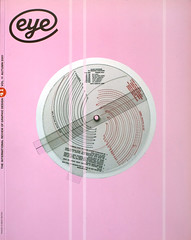Autumn 2001
Another look at British identity
The Bus: The Free Photographic Omnibus 1973-2001
Daniel Meadows<br>Harvill Press. London, £15.99<br><br>The Bus is part a then-and-now portrait portfolio, part autobiography, part essay on documentary photography, part diary and part reportage, and mostly very British. Daniel Meadows celebrates British identity in his portraits casually collected during 1973-74, then carefully revisited in the late 1990s. His work unconsciously colludes with those recent studies of Britishness – The Fast Show and The League of Gentlemen. Meadows represents their raw material. His portraits echo characters we see in the work of his close contemporary Martin Parr; an Ernie Wise to Parr’s Eric Morecambe, John Snow to Parr’s Trevor Macdonald.
Meadows’ images reveal, (celebrate, is the wrong word), another layer in the sediment of the British character and in a strange way they show the process by which national identity is built up. When these photographs were taken Monty Python was satirising the Britishness of Cleese, Idle et al’s teen years. League of Gentlemen does the same, plundering the early 1970s of these photographs. In twenty-five years the alco-pop guzzling youth of small towns and Henry Bond will be the new British ‘characters’. Meadows’ work provides a control study for recent comedy – the only way we can deal with the subject of identity. Another way of thinking of his work is as an immediate antecedent to the early i-D magazine or the source of the lyrics of Punk.
Britishness aside, like all good portraits, the photographs transcend the limitations of their conventions. It is the details of the images that turns their almost Victorian quality to advantage by drawing us from the repetitions of general massing and composition to the detail of face, hands, clothing or nuance of pose. Meadows’ work combines two distinct qualities which he shares with other photographers such as the German, August Sander. On the one hand his generalised anonymous posing and backgrounds make us focus on the iconic narratives of the human condition. A fat woman with a small child in her arms appears almost identical in a later portrait which only serves to emphasise her enormous cuckoo of a son. Uncannily boy and man radiate the same reservation while mum has never changed her pride in her son.
Meadows’ strange eye for sameness is equally telling when he chooses to subvert it (though he might deny this). In one image a mother and daughter bask in mutual happiness and unity – same eyes – same teeth; in the reprise picture there is a space for the dead mum and in her daughter, a different downcast eye and mouth – an inward expression of sadness in contrast to the earlier sunny, charabanc trip disposition they shared. Underneath this, the discipline of the photographer makes sure the daughter’s arm is still holding the oddly unlikely Joan Collins sunglasses in almost the same position as the earlier photo, only the arm of the mother is absent. The effect is the same as in diptych icons, which show the Virgin and child on one side and on the other the virgin in the same pose but the child absent. Simple, but the palpable absence of the other person is moving in its straightforward desolation.
In his text, although he admits to art directing his subjects Meadows has a tendency to represent his work as artless – nothing could be further from the truth. Meadows’ chief skill as a photographer lies in his management of the subject, almost as much as in Parr’s work (with whom he studied photography). This is amply illustrated in the images of twins, two years old in the first image and twentysomething in the second. This pair of images give the illusion of pure denotation – the image without suggestion – particularly through the sense that you can’t escape your image – you look what you look whether two or 22. But one can only make these judgements because the later image recreates the first, not only that but they both articulate the conventions of high street portraiture (particularly the infants) and the later documentary portrait conventions of America and Germany. Meadows, like any icon painter, highlights significance through the manipulation of familiarity.
In the copious text of the book Meadows betrays a disappointingly Stalinist view of his practice. He yearns for an imagery of ‘reality’, purely denotative and absent from the dreaded connotation he criticises Gursky and Parr for manipulating. He hates the presence of the artist, an element which, in fact, his own work is rich in, for in truth, as Auden said, which of us can bear to feel forgotten. The richness of meaning in his work, its connotation, already a mine of significance for students, is the true quality of Meadows. For while the text of this book is interesting and well written, it simply adds shade to the much richer and complete portfolio the book begins with. In the end I suspect that the text is piggybacking the images and Meadows’ reputation would benefit more by spending the money used for the text on better reproduction of his real work, photography.
David Heathcote, design historian, York and London
First published in Eye no. 41 vol. 11, 2001
Eye is the world’s most beautiful and collectable graphic design journal, published quarterly for professional designers, students and anyone interested in critical, informed writing about graphic design and visual culture. It is available from all good design bookshops and online at the Eye shop, where you can buy subscriptions and single issues.

